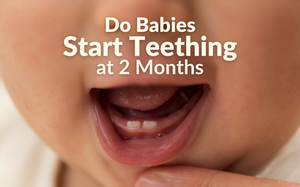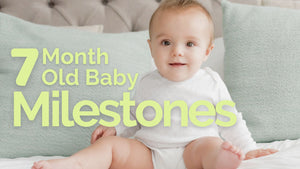Reading to a baby may seem pointless since they cannot show that they understand anything, but it has a lot of benefits. When you read to your baby from a young age, you are helping to develop their communication skills, listening abilities, memory, and vocabulary. Reading with different voices, expressions, and gestures also helps your baby’s emotional and social development. Additionally, it builds a bond between you and your baby, teaching them that reading is an essential skill and quite enjoyable.
Different books at different ages
Incorporate the habit of reading into your little one right from birth. For the first few months, babies just enjoy the way your voice sounds. Reading anything, including books with text that rhymes, is a good choice. When your little one is young, they do not understand any pictures or words, but the colours, shapes, and patterns will hold their attention. As they grow older, they will want to participate in the reading. Use this guide to decide on books to read:-
Four to six months
A baby will start showing interest in the book. They will try to grab it and may put it in their mouth. Books that are sturdy and have bright colours and photos are an excellent option for this age. -
Six to 12 months
Gradually, your baby will understand that images in the book represent objects and show a preference for particular ones. They will start to make sounds as a response to the reading. With your help, they may turn the pages too. Select books that have different textures, pop-ups, and openable flaps. -
12 to 24 months
They will actively try to participate in the reading. Read books about their favourite topics and ones that contain different textures and flaps to open. Look for picture books and books about their daily activities. -
24 to 36 months
You may be able to introduce books with paper pages now, as opposed to books that have thick pages made of cardboard or paperboard for younger kids. They will start to understand the concept of reading and prefer repetitive ones, so they can also read along with you.
Check out the extensive glossary of books BabyG has for your little ones, here.
How and when to read?
Tips for reading to your baby include:- In the early months, hold your baby close while reading. Later, the baby may need some space to move.
- When your baby is young, reading for a few minutes is enough, but as they grow, increase the amount of time spent reading.
- Read their favourite books repeatedly. Babies don’t get tired of stories they love.
- Keep books in places they can reach easily.
- For older babies, point to the alphabet and emphasise sounds and images. Explain the words associated with them.
- Choose books as per the baby’s age and help them understand things like colours, shapes, animals, sounds, etc.
- Try to correlate the images to things they see in daily life.
- Show enthusiasm while reading. Use different voices and expressions to read.
- Choose a comfortable and quiet time to read, like before heading to bed. This will give some downtime between playing and sleeping and set a routine to instil a habit of reading books.
Should I use audiobooks?
Children get distracted easily without visuals, so audiobooks may not excite them. The best thing is to read yourself as the baby learns to speak by looking at your lips, mouth, and gestures.Is reading from a screen okay?
Avoid reading from screens just before bedtime, and keep it to a minimum otherwise too, as the blue light from the screen will keep your child awake. You could use a physical book before bedtime instead.Post-reading activities
Engage in some fun activities after reading, such as:- Discuss the topics in the book.
- Allow your child to be creative and retell the story in their own way.
- Draw or ask your child to draw the objects and characters they see in the book.
Reading with your baby is vital for their development. Just remember, seeing you enjoy reading a book into adulthood will reinforce their desire to read from a young age.
References:
- KidsHealth. Reading books to babies [2019].
- KidsHealth. Toddler reading time [2019].
- Zero to Three. How to introduce toddlers and babies to books.













LEAVE A COMMENT